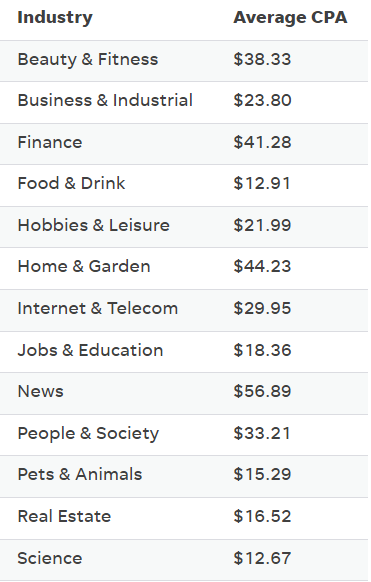As a marketer, one of your primary goals is to generate leads. And when you’re formulating a lead generation strategy, a significant factor is cost. One way to do this is by buying leads from Facebook ads. But before you decide, you want to know how much it will cost. In this blog, we’ll tell you exactly that and much more—from understanding CPL in Facebook ads to tips on reducing ad costs.

Background: Facebook Lead Ads in a Nutshell
Facebook lead Ads are paid ads targeting users likely to be interested in a particular brand, product, or service. These ads appear on Facebook News Feeds, Stories, Marketplace, and more. They are designed to keep users engaged on social media while they fill out lead forms with basic information. The format of these ads includes in-text links and carousels labelled as “sponsored”.
What does CPL mean on Facebook?
Cost per lead (CPL) is a Facebook advertising score used to assess your ad campaign’s effectiveness. Facebook calculate your CPL by dividing your ad spend by the number of leads generated from a campaign.
CPL is an essential metric for marketers looking to determine their return on investment on Facebook ads. It helps them understand the cost of each lead relative to its potential value and can help them optimise their campaigns based on this metric.

Image source WordStream
What is a good CPL for Facebook ads?
The current average CPL for Facebook ad campaigns is £16.40 ($19.81). The caveat is that the CPL in different sectors can be substantial, for instance, according to WordSteams data. Food & Drink saw an average CPL of £10.69 ($12.91), but News is £47.09 ($56.89).
Remember that your industry/sector is more competitive than most, so your ad spending and lead cost are higher. To the left is the table from WordStream highlighting each industry and the average CPL –
Why is my Facebook CPL so high?
As we’ve mentioned above, there are several reasons why your CPLs could be high. Addressing your sector/industry to determine its competitiveness is an excellent place to start. Once you’ve worked this out, look at underperforming ad copy and imagery, test out different headlines, and ensure your targeting is set correctly.
There are many moving parts when it comes to lead generation & marketing in general. You are trying to find the right message to the right potential customer at the right time. If your adverts do not match your audience targeting, you will spend more to reach your goals.

Subscribe to the Funnel Boost Blog
How do I lower my Facebook CPL?
Every advertiser’s goal is to reduce your CPLs and, ultimately, your overall advertising spending. Breaking this down into more straightforward steps:
1. Select the right campaign objective – Marketers need to set a clear campaign objective to reduce their ad cost per lead. For example, lead generation campaigns are intended to generate new leads for a company or service. Facebook Ad manager has built-in lead generation objectives, which will guide you in setting the right campaign objective. Align these with the built-in lead forms, and you will help CPLs.
With lead forms, marketers can minimise friction and drive potential customers to fill out lead forms with ease, which can help them convert more leads into sales.
2. Address your audience size – Facebook has a learning phase with any ad campaign. Whilst you’re in the learning phase, having a too-narrow audience could cause CPLs to increase as you may be paying more for clicks in a competitive space. At the start, there is no harm in starting with a broad audience and narrowing this as you go along. This will allow you to find the best placements for your ads, the correct audiences to target, the right messaging and more. Being too specific at the start of campaigns can do the opposite to CPLs.
3. Run retargeting campaigns – Retargeting in advertising has always been a quick win to help reduce costs and CPLs. A retargeting campaign will automatically track visitors who have previously visited a specific website or app and show them adverts throughout the Facebook now Meta universe.
One thing worth looking at is splitting out a campaign for users who have engaged/liked/followed your company page. Working similarly to a remarketing campaign, these users regularly engage with your content and, therefore, will be receptive to any adverts they see.
4. Make your campaigns relevant – This has been mentioned a few times, but it holds so much importance. Your messaging has to be key, images, video content, and headings. Everything needs to click for your adverts to succeed. Create personas, find pain points and needs, and tailor those messages. Ask leading questions, and avoid the common trap of always thinking like a marketer.
5. Reduce ad frequency score – Lowering your ad frequency score is one method to improve ad quality and get more bang for your buck. You can lower the frequency score and enhance advertising efficiency without sacrificing performance or quality by targeting a more precise audience, developing appropriate ad content, and changing the budget accordingly. If you are creating a new Facebook ad campaign or optimising an existing one, consider the following methods to reduce advertising expenses while meeting your business objectives.
6. Focus on post-click experiences – Fast loading speeds are critical for improving post-click experiences. This can be accomplished by shrinking picture sizes and removing extraneous Javascript. Another essential step is to optimise the website’s performance by compressing photos, minimising third-party programmes, and reducing page clutter.
7. Finally, if you have a restricted budget, consider employing lower-cost targets such as awareness or reach rather than engagement. This will allow you to concentrate on developing advertising with a greater conversion rate.
Conclusion
Facebook is still the most popular social media platform, with 2.8 billion users. On top of this, the average cost per click (CPC) on Facebook is £0.80 ($0.97), so it is a viable option if you’re looking to run campaigns with the target of generating leads.





